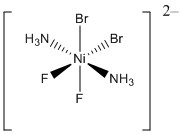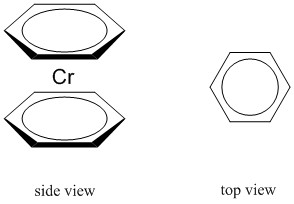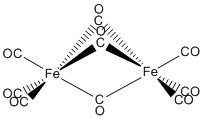Chemistry 401
Intermediate Inorganic Chemistry
University of Rhode Island
Fall 2018
Exam 3
1. For the following complexes write the systematic name, give the point group, determine the LFSE in units of Dq and P, predict the stability according to the EAN rule, and estimate the spin-only magnetic moment in units of μB. For each complex indicate whether an ionic bonding theory or a covalent bonding theory is more appropriate.
a. [Fe(CN)6]2–
b.
c.
d.
2. For the following complexes draw the structure, give the point group, determine the LFSE in units of Dq and P, predict the stability according to the EAN rule, and estimate the spin-only magnetic moment in units of μB. For each complex indicate whether an ionic bonding theory or a covalent bonding theory is more appropriate.
a. fac-trischlorotrisiodomanganate(II) ion
b. trans-tetraamminebiaquacobalt(II) ion
c. η6-benzenetricarbonylchromium(0)
d. pentaamminebromocobalt(III) ion
3. Predict if the following complexes are Jahn-Teller active or not. If yes, predict the nature of the distortion.
a. [Fe(NH3)6]3+
b. [FeCl6]3–
4. Triphenylphosphine is a strong ligand, in part, because it can act as a good backbonding acceptor, similar to CO. Which orbitals on the ligand are responsible for the backbonding? Explain your reasoning.
Potentially Useful Information:
Spectrochemical Series
I– < Br– < S2– < SCN– < Cl– <
NO3– < F– < ox2– < H2O < SCN– <
CH3CN
en = ethylenediamine bpy = 2,2'-bipyridine phen = phenanthroline PPh3 = triphenylphosphine
μ = [n(n+2)]½ μB



